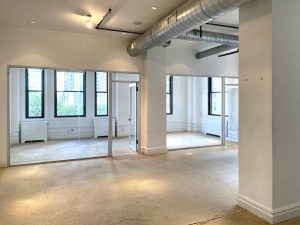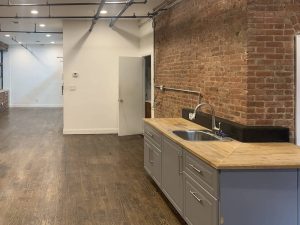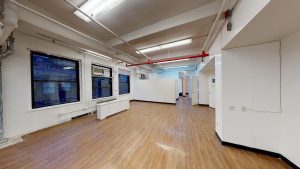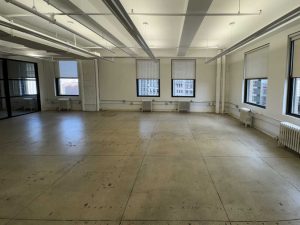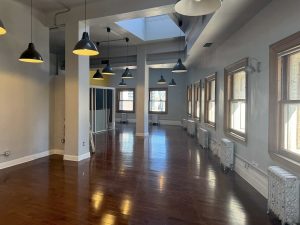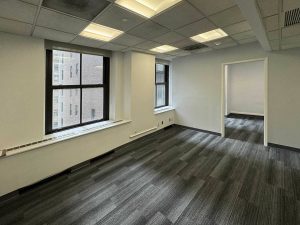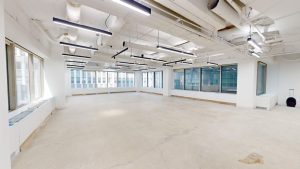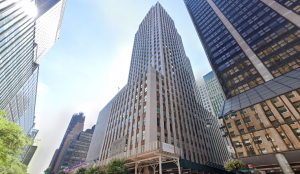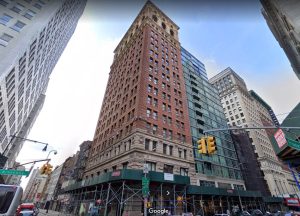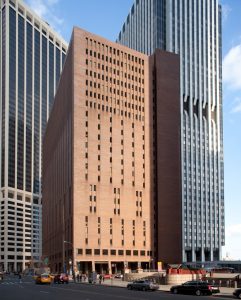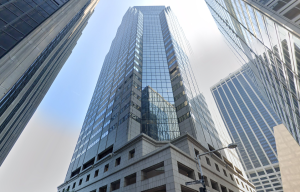New York City’s skyline may be as impressive as ever. Still, the story inside those gleaming towers is far from picture-perfect. The commercial real estate market that once defined this city’s swagger faces a reality check. From Midtown to FiDi, ‘space available’ has become an all too common phrase, and landlords feel the squeeze.
The entire commercial real estate ecosystem in NYC continues to face a transitional period. Tenants are reassessing their space needs, investors are hesitant, and property owners stress to keep their portfolios afloat. However, the Fed’s 50 basis point interest rate cut might be just what this market needs as the catalyst to start turning the tide.
The State of NYC’s Commercial Real Estate Market
The streets of New York City are telling a new story. It’s not written on neon signs or taxi horns but on “For Lease” placards and quiet office lobbies. Whether you’re a longtime New Yorker or a recent transplant, the commercial real estate market is in a state of flux—subtly and profoundly.
Office Sector Struggles
Remember when finding office space in Manhattan felt like trying to score tickets to a hit Broadway show? Those days are on pause. The office availability rate has soared to 17.9% as of Q2 2024, a dramatic jump from the 10% we saw in Q4 2019 before the onset of the pandemic.
To put this in perspective, 96 million square feet of vacant office space remain. That’s not just a number – empty desks where your colleagues once sat, quiet conference rooms where you brainstormed ideas, and darkened windows in some of the city’s most iconic buildings. As you walk past these towers on your commute, you might notice the change in energy.
The market’s response has been eye-opening. Some properties go for up to 70% off their previous sale prices. If you’re in the market to buy, this could be your chance. But if you’re an owner or investor, you’re likely feeling the pressure of this dramatic shift.
Decline in Multifamily Valuations
It’s not just offices feeling the pinch. The apartment buildings that give neighborhoods their unique character are also facing challenges. The average price for multifamily buildings dropped from $722 per square foot last year to $611 this year – a 15% decrease reshaping the investment landscape.
Take the recent sale of a building at 200 West 67th Street. It went for $678 per square foot. A few years ago, that price would have made headlines. Now, it’s a sign of the new reality of the real estate market.
Why is this happening? It’s a perfect storm. Mortgage payments are coming due, often at higher rates. At the same time, tax exemptions that many owners relied on are expiring.
How Lower Interest Rates Affect Commercial Real Estate
Now, let’s talk about how the interest rate cut could shake things up in New York City commercial real estate. If you’re involved in this business, you’ll want to pay attention.
Reduced Borrowing Costs
Here’s the deal: the Fed just cut rates by 50 bps to 4.75%-5%. And they’re far from finished- by the end of 2024, we could see rates at 4.4%. That’s huge news if you’re in real estate- it could save you or your company hundreds of millions on loans.
Think about it. If you’re looking to buy a new property or refinance an existing one, you could suddenly find yourself with a lot more cash in your pocket. Lower interest rates mean lower monthly payments, which means more money for other investments or improvements. It’s like getting a raise without having to ask for one.
Increased Investment Activity
Now, let’s look at the bigger picture. The market’s been pretty quiet lately, but these rate cuts could change that fast. We’re talking about a potential flood of investors coming back to the market, especially in New York City.
Here’s a number that’ll make your head spin: there’s $900 billion in maturing mortgages nationwide. That’s not a typo—$ 900 billion. If you own property, you might feel pressured to refinance or sell. But if you’re an investor, you’re seeing dollar signs. And you’re not alone. Big players like Brookfield, Starwood, and Carlyle have raised over $34 billion to invest in distressed real estate in New York City. They’re not messing around and have their eyes on NYC.
So what does this mean for you? Whether you’re a property owner, a developer, or an investor, lower interest rates could open up some serious opportunities. It could mean better cash flow, cheaper financing for new projects, or chances to snap up properties at reasonable prices. The bottom line is this: keep your eyes open.
Impact on Specific Real Estate Sectors
The Fed’s recent rate cuts are stirring up quite a scene in New York City’s real estate world. With whispers of more cuts on the horizon, it’s worth looking closer at how this financial shake-up impacts the real estate scene in two unique ways.
Office-to-Residential Conversions
That office building you used to call your second home? The one with the temperamental elevators and the lobby stuck in a time warp? Well, it might just become someone’s actual home.
These lower interest rates have developers eyeing those half-empty office towers like they’re the last bagel at a Monday morning meeting. City Hall’s sweetening the deal with incentives like the 467-m tax credit, essentially rolling out the red carpet for anyone willing to turn cubicle farms into cozy apartments.
We’re talking about whole neighborhoods getting a new lease on life. That tired Class B office block down the street? Don’t be surprised if it becomes the next hot address in town. And if the Fed keeps wielding its rate-cutting scissors through year-end, as some predict, you might see more hard hats than pigeons on your morning commute.
Hotel Sector Rebound
Now, let’s talk hotels. This sector’s recent history reads like a New York nightmare – trading volumes plummeted by a staggering 60% in the first half of 2024. It’s as if someone hit the pause button on the city that never sleeps.
But here’s where things get interesting. These Fed rate cuts could act like a shot of espresso for the hotel industry and stabilize financing. The Fed’s rate cut could be the first of several through the end of the year. Each rate cut makes it easier for hoteliers to keep the lights on and for developers to break ground on new projects. If the Fed continues this trend through December, don’t be shocked to see the pipeline of hotel developments revive as occupancy rates recover to pre-pandemic levels.
Data-Driven Predictions for NYC Commercial Real Estate Post-Rate Cut
With this interest rate cut likely the first of several, New York City’s commercial real estate market faces significant changes. Here are some key predictions:
- Transaction Volume Increases: Expect a surge in deals as investors target distressed assets at discounted prices. We could see a notable uptick in market activity.
- Lower Cap Rates: Current cap rates of around 6.19% will likely decrease. Reduced borrowing costs will make properties more attractive, potentially driving values up.
- Cheaper Capital=Office Building Enhancements: Cheaper borrowing won’t make office leases more attractive – that’s still all about supply and demand. But it’s a game-changer for building quality. When investors can borrow at 5% instead of 7%, suddenly refurbishing tired offices becomes viable. Think premium materials, sleek amenity centers, and stylish common areas.
- Hotel ADRs Stabilize: Average Daily Rates (ADR) for hotels reached $340 by Q4 2023 and could remain strong. Limited new supply and lower financing costs will likely support these rates.
- Restructuring and Distressed Deals: Anticipate a wave of debt restructuring for overleveraged assets. Private equity funds are poised to capitalize on these opportunities, potentially reshaping ownership across the city.
Final Takeaways on the Interest Rate Cut
Despite the doom and gloom over the last few years, remember: this is New York we’re talking about: the city that survived the ’70s fiscal crisis, 9/11, the 2008 crash, and inevitably, the pandemic. Like a prizefighter who’s taken a few hard hits but refuses to stay down, the Big Apple has a knack for bouncing back stronger than ever. And in this latest round against a struggling commercial real estate market, the Fed is stepping into the ring as New York’s cornerman. With this interest rate cut only the beginning of what could be a looser monetary policy, property owners who’ve been on the ropes can finally catch their breath and steady their footing.
As the city catches its second wind, new possibilities begin to emerge. Picture savvy investors snatching up distressed assets like bargain hunters at a sample sale, breathing new life into forgotten corners of the city. Imagine once-lively office buildings, now in default, being acquired at bargain prices and transformed into upscale mixed-use spaces, luxurious apartments, and high-end retail destinations, their windows lit up again with a new purpose. While the path ahead may be challenging, it’s full of opportunities to reshape and revitalize the city’s commercial heart. After all, if there’s one thing New York knows how to do, it’s turn adversity into advantage – and write its next chapter bigger and bolder than the last.



